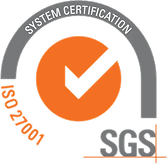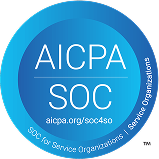Hardware-Accelerated GPU Scheduling
Hardware-Accelerated GPU Scheduling is a feature in modern operating systems (like Windows 10 and later) that allows the GPU (Graphics Processing Unit) to take direct control over its memory management and task scheduling, rather than relying on the operating system's kernel to handle these functions.
How It Works
- Traditionally, the CPU manages GPU scheduling tasks, queueing up commands, and coordinating resources.
- With hardware-accelerated GPU scheduling, the GPU itself is given more responsibility for managing and scheduling its workloads directly.
- This reduces the overhead on the CPU, leading to improved system performance and lower latency, especially for graphics-intensive tasks like gaming or video rendering.
Benefits
- Reduced Latency:
- Lowers input-to-output latency in games and real-time applications.
- Improved Performance:
- Frees up CPU resources for other tasks, improving overall system responsiveness.
- Enhanced Graphics Efficiency:
- Optimizes GPU resource allocation, leading to smoother frame rates and better rendering performance.
Applications
- Gaming:
- Improves responsiveness and visual smoothness, especially in high-demand scenarios.
- Video Rendering:
- Enhances the efficiency of rendering tasks in video editing and 3D modeling applications.
- AI and ML Workloads:
- Helps optimize GPU utilization in compute-heavy tasks like deep learning model inference.
- AR/VR:
- Reduces latency, which is critical for immersive augmented and virtual reality experiences.
Requirements
- Hardware:
- A compatible GPU that supports hardware-accelerated scheduling, such as NVIDIA GPUs with drivers supporting the feature (e.g., GTX 1000 series or later) or modern AMD GPUs.
- Operating System:
- Windows 10 version 2004 or later with the necessary updates.
- Drivers:
- Latest GPU drivers from manufacturers like NVIDIA or AMD.
How to Enable on Windows
- Open Settings and go to System > Display.
- Under Graphics Settings, look for the "Hardware-Accelerated GPU Scheduling" option.
- Toggle the feature On.
- Restart your computer to apply the changes.
Potential Drawbacks
- Compatibility Issues:
- Older hardware or drivers might not fully support this feature, leading to stability problems.
- Marginal Gains:
- The performance improvements might be negligible for lower-end systems or applications not designed to leverage the feature.
Frequently Asked Questions About Hardware-Accelerated GPU Scheduling
1. What is hardware-accelerated GPU scheduling (in plain English)?
It’s a feature where the GPU takes direct control of its own memory management and task scheduling instead of relying on the OS kernel/CPU to queue and coordinate every step. The result is lower CPU overhead, reduced latency, and smoother performance—especially in graphics-intensive work like gaming and video rendering.
2. How does it differ from traditional (CPU-managed) GPU scheduling?
Traditionally, the CPU manages the GPU’s queues and resources. With hardware-accelerated scheduling, the GPU manages and schedules its workloads directly, which reduces CPU work and can lower input-to-output latency in real-time apps.
3. What real-world benefits should I expect?
- Reduced latency in games and other real-time apps
- Improved overall responsiveness by freeing CPU resources
- Smoother frame rates and better rendering efficiency thanks to more optimal GPU resource allocation
4. Which use cases see the most impact?
- Gaming: better responsiveness and visual smoothness under heavy load
- Video rendering / 3D modeling: more efficient rendering pipelines
- AI/ML inference: helps optimize GPU utilization for compute-heavy tasks
- AR/VR: latency reductions that are critical for immersive experiences
5. What are the requirements and how do I enable it on Windows?
- Hardware: a compatible GPU (e.g., NVIDIA GTX 1000 series or later, or modern AMD GPUs)
- OS: Windows 10 version 2004 or later with updates
- Drivers: the latest NVIDIA or AMD drivers
Enable it: Settings → System → Display → Graphics settings → toggle Hardware-Accelerated GPU Scheduling On, then restart your PC.
6. Any drawbacks or reasons not to use it?
Two main caveats:
- Compatibility: older hardware/drivers may not fully support it and can cause stability issues.
- Marginal gains: on lower-end systems or apps that don’t leverage the feature, improvements may be small or negligible.


Empowering humanity's AI ambitions with instant GPU cloud access.
U.S. Headquarters
GMI Cloud
278 Castro St, Mountain View, CA 94041
Taiwan Office
GMI Computing International Ltd., Taiwan Branch
6F, No. 618, Ruiguang Rd., Neihu District, Taipei City 114726, Taiwan
Singapore Office
GMI Computing International Pte. Ltd.
1 Raffles Place, #21-01, One Raffles Place, Singapore 048616
Sign up for our newsletter
Subscribe to our newsletter


© 2025 All Rights Reserved.

